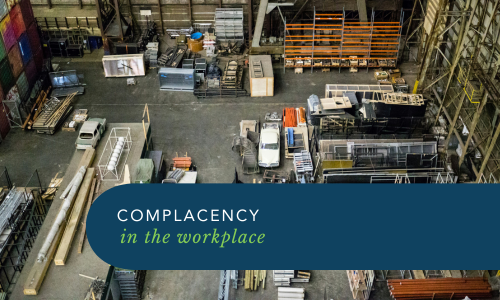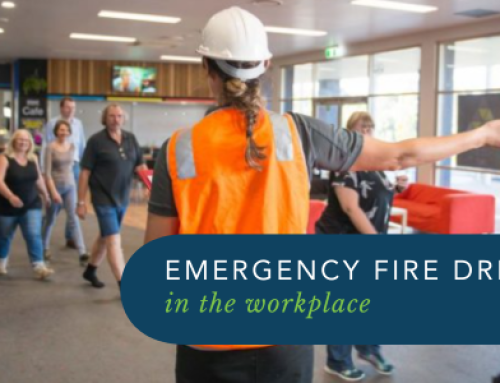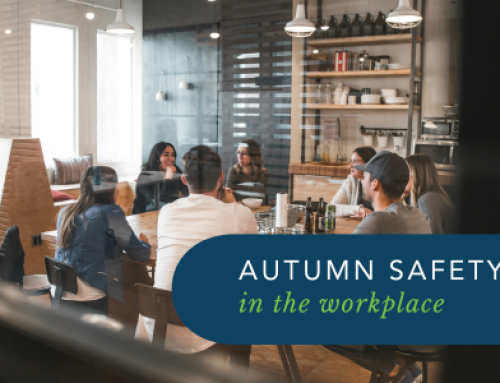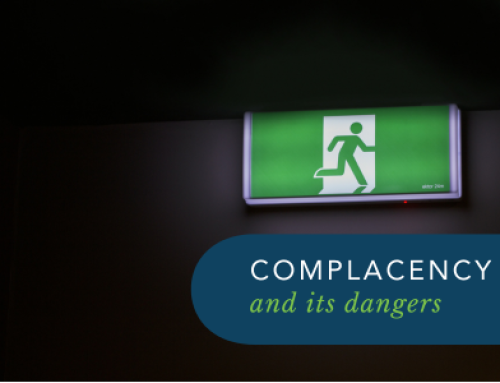Wouldn’t it be great if every day we woke up and leapt out of bed, looking forward to an exciting day of new experiences, no two days being the same? No complacency here!
You are probably familiar with the term & have possibly used it yourself – “The Daily Grind”. It refers to your everyday routine, typically your work routine- monotonous…. tedious… dull…it feels constant & unrelenting.
In the workplace, we are required to follow policy and procedure, guidelines and standards to keep not only ourselves safe but our colleagues. Depending on your role, variety may be what gets you going each day, others preferring a semblance of routine & pattern to their day. Or maybe your role has so much routine that you could do it with your eyes closed?
It is common in many workplaces that repetitive work is performed on a daily basis, which can lead to complacency. Complacency is a feeling of calm or self-satisfaction about your own abilities, accompanied by unawareness of potential dangers or deficiencies.
Complacency can be the silent killer of your business in a few different ways:
- Financially- the cost of sick leave, staff turnover, retraining, legal fees, unable to obtain new contracts.
- Morale- employees who feel they have no voice or unable to make a difference won’t feel inclined to be productive.
- Reputation- retention of staff may be difficult to maintain.
In industries where physical tasks make up the majority of the work required, like healthcare and construction, where the need to be extra vigilant and take safety measures seriously, complacency can have devastating consequences.
Everyone is guilty of being complacent at work every now and then. However, it truly becomes an issue when it becomes long-term. All too often workers do not realize how complacent they actually have become until they have a near miss or close call.
It doesn’t always mean employees are unhappy, often it is because they are comfortable to the point where they don’t feel the need to seek improvement or implement change.
What Does Complacency Look Like?
AUTO-PILOT
- Workers may not conduct a risk assessment – because they are experienced in their job or are in a rush.
- Not thinking about who they are working with.
- Not considering the task they are doing.
- Not considering the workplace environment they are working in.
- Not considering the consequences.
- Over familiarity of the workplace environment and job.
OVERCONFIDENCE
- Taking shortcuts in processes.
- Inattention to their work environment.
- Rushing to complete tasks.
- Assuming everyone is aware of the health and safety aspects of the work.
- Riskier work behaviours.
- Accidents may be rare, and workers may perceive that accidents don’t happen in the workplace.
NO ACCOUNTABILITY
- Lack of engagement in meetings or with other workers.
- Staff training – not attending or engaging in on-going health and safety awareness training.
- Passing on bad work habits to new staff.
- Lack of incident reporting – near misses or accidents may not be reported by workers.
- Dissatisfaction with your work and lack of motivation.
What Can Be Done to Help Decrease or Avoid Complacency in your Workplace?
- Perform a risk assessment prior to conducting work.
- Make training more frequent and engaging for workers.
- Ensure regular breaks from repetitive tasks.
- If possible, rotate people through an area so each person is not restricted to hours of a repetitive task.
- Always be vigilant for your own and others’ safety.
- Don’t assume that years of experience means that errors will not be made.
- Report near misses and accident to the supervisor.
- Review work processes and procedures.
- Include workers in health and safety risk assessments, talking through work tasks, inspections and help other workers in their task or job.
Complacency in Emergency Response Drills.
When it comes to responding to an emergency, complacency is something that an already stressful situation can do without. Regular drills are designed to help our wardens feel that they have some control over a situation that can feel overwhelming.
It is not uncommon for people to disregard an alarm. Perhaps the building has an alarm system that has frequent false alarms, or evacuations so often that people feel their work is constantly interrupted. Or perhaps the drill is held at the same time, day & month that people are already heading out the door before the exercise is commenced.
Things you can do to avoid this type of complacency:
- Remind staff of the importance of participating in exercises and knowing the response requirements in an evacuation.
- Look at how often the exercises are being held & adjust their frequency and scenarios.
- Get feedback from the employees about important events so potential dates can be blocked from exercises.
Complacency can affect a company’s overall performance and company culture. Seeking constant improvement and consulting with workers creates meaningful work for employees, improved service and products for consumers, and better long-term health and safety for organisations.
If you need help with your Workplace Emergency Procedures. The Workplace Emergency Management team can provide guidance to your team. Get in touch today.
GET IN TOUCH
Are you ready for peace of mind that your workforce is as safe and prepared as possible?
With a dedicated team of staff ready to help you meet compliance requirements and improve the overall safety of your workplace, all you need to do is get in touch.
Request your free audit today!



